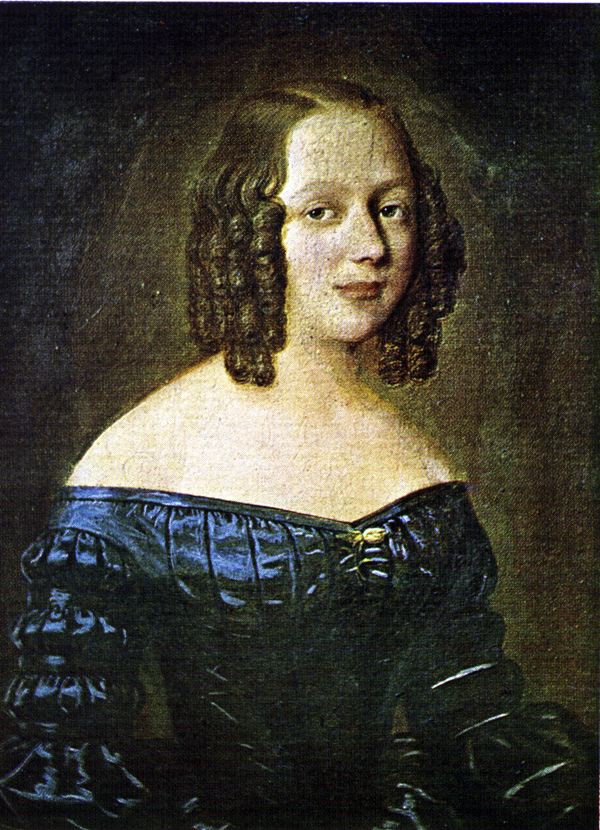|
Jøden (1842)
''Jøden. Ni blomstrende Torneqviste'' (The Jew. Nine Blossoming Briar Shoots) is a collection of poems by Henrik Wergeland, published in April 1842, as a contribution to the struggle for the Jews' right to reside in Norway. The book is a collection of poems and short prose, and it opens with the following dedication: ''Norges Storting helliges disse Medfölelsens Udgydelser for den berömte, fortjente, ulykkelige Green af Menneskeslægten, hvis fremtidige Forhold til Fædrelandet det skal afgjöre. Quod felix patriæ faustumque sit!'' These sympathetic outpourings favoring the famous, deserving, unhappy branch of humanity are dedicated to Norway's Parliament, which must decide its future relationship to the Fatherland. May it bring good luck and happiness to the Nation! The collection contains some of Wergeland's best-known poems. The first and last poem in the collection address general issues related to the fight for what is right, and the conviction that it is useful, eve ... [...More Info...] [...Related Items...] OR: [Wikipedia] [Google] [Baidu] |
Henrik Wergeland
Henrik Arnold Thaulow Wergeland (17 June 1808 – 12 July 1845) was a Norwegian writer, most celebrated for his poetry but also a prolific playwright, polemicist, historian, and linguist. He is often described as a leading pioneer in the development of a distinctly Norwegian literary heritage and of modern Norwegian culture. Though Wergeland only lived to be 37, his range of pursuits covered literature, theology, history, contemporary politics, social issues, and science. His views were controversial in his time, and his literary style was variously denounced as subversive. Early life He was the oldest son of Nicolai Wergeland (1780–1848), who had been a member of the constituent assembly at Eidsvoll in 1814. The father was himself pastor of Eidsvold and the poet was thus brought up in the very holy of holies of Norwegian patriotism. Wergeland's younger sister was Camilla Collett and younger brother major general Joseph Frantz Oscar Wergeland. Henrik Wergeland entered T ... [...More Info...] [...Related Items...] OR: [Wikipedia] [Google] [Baidu] |
Hordaland
Hordaland () was a county in Norway, bordering Sogn og Fjordane, Buskerud, Telemark, and Rogaland counties. Hordaland was the third largest county, after Akershus and Oslo, by population. The county government was the Hordaland County Municipality, which is located in Bergen. Before 1972, the city of Bergen was its own separate county, apart from Hordaland. On 1 January 2020, the county was merged with neighbouring Sogn og Fjordane county, to form the new Vestland county. Name and symbols Name Hordaland () is the old name of the region which was revived in 1919. The first element is the plural genitive case of , the name of an old Germanic tribe (see Charudes). The last element is which means 'land' or 'region' in the Norwegian language. Until 1919 the name of the county was which meant '(the) southern (part of) Bergenhus amt'. (The old was created in 1662 and was divided into Northern and Southern parts in 1763.) Flag Hordaland's flag shows two golden axes ... [...More Info...] [...Related Items...] OR: [Wikipedia] [Google] [Baidu] |
History Of The Jews In Norway
The history of Jews in Norway dates back to the 1400s. Although there were very likely Jewish merchants, sailors and others who entered Norway during the Middle Ages, no efforts were made to establish a Jewish community. Through the early modern period, Norway, still devastated by the Black Death, was ruled by Denmark from 1536 to 1814 and then by Sweden until 1905. In 1687, Christian V rescinded all Jewish privileges, specifically banning Jews from Norway, except with a special dispensation. Jews found in the kingdom were jailed and expelled, and this ban persisted until 1851. In 1814, when Norway gained independence from Denmark, the general ban against Jews entering the country was "continued" in the new Norwegian Constitution. Sephardim were exempt from the ban, but it appears that few applied for a letter of free passage. After tireless efforts by the poet Henrik Wergeland, politician Peder Jensen Fauchald, school principal Hans Holmboe and others, in 1851 the Norwegi ... [...More Info...] [...Related Items...] OR: [Wikipedia] [Google] [Baidu] |
National Library Of Norway
The National Library of Norway () was established in 1989. Its principal task is "to preserve the past for the future". The library is located both in Oslo and in Mo i Rana. The building in Oslo was restored and reopened in 2005. Prior to the existence of the National Library, the University Library of Oslo was assigned the tasks that normally fall to a national library. The Norwegian ISBN Agency, responsible for assigning ISBNs with prefix 82- and 978-82-, is part of the National Library of Norway. The National Library is also responsible for legal deposits made from publishers in Norway. All material is to be submitted free of charge. Aslak Sira Myhre is national librarian from November 2014. History On 15 August 2005, Norway opened a fully functioning national library for the first time in its history. This occurred exactly 100 years after Norway dissolved its union with Sweden. Although gaining independence in 1905 marked the peak of Norwegian nationalism, it took Norway ... [...More Info...] [...Related Items...] OR: [Wikipedia] [Google] [Baidu] |


